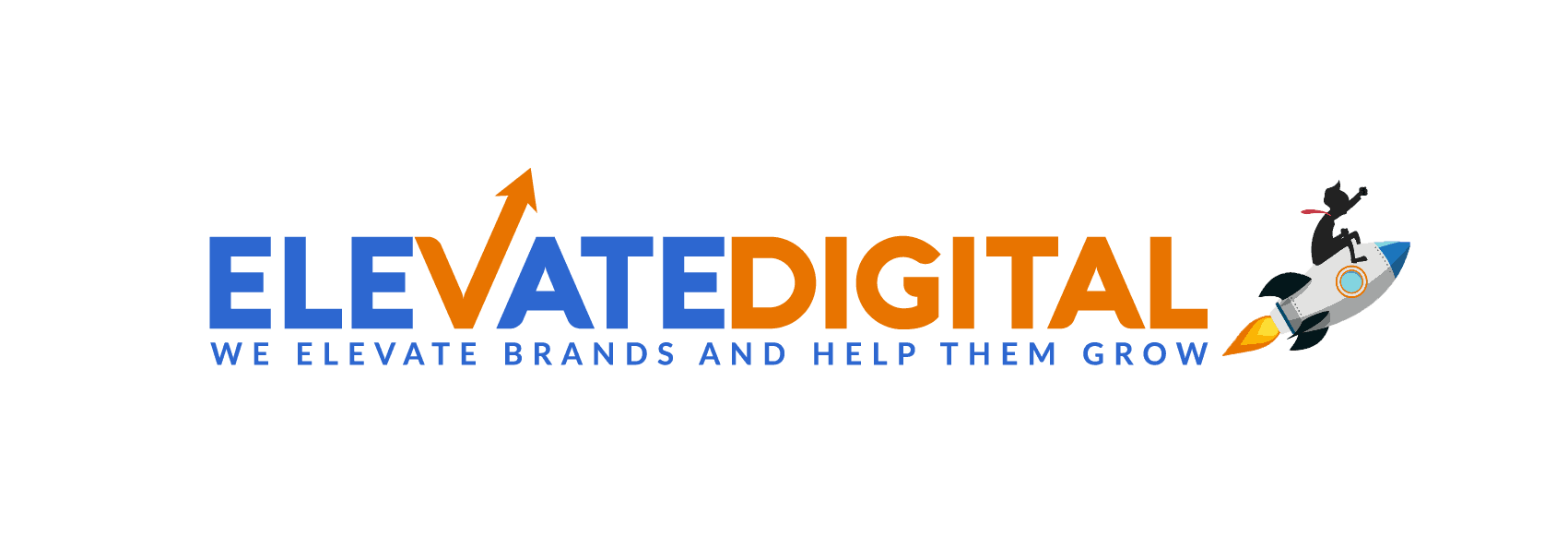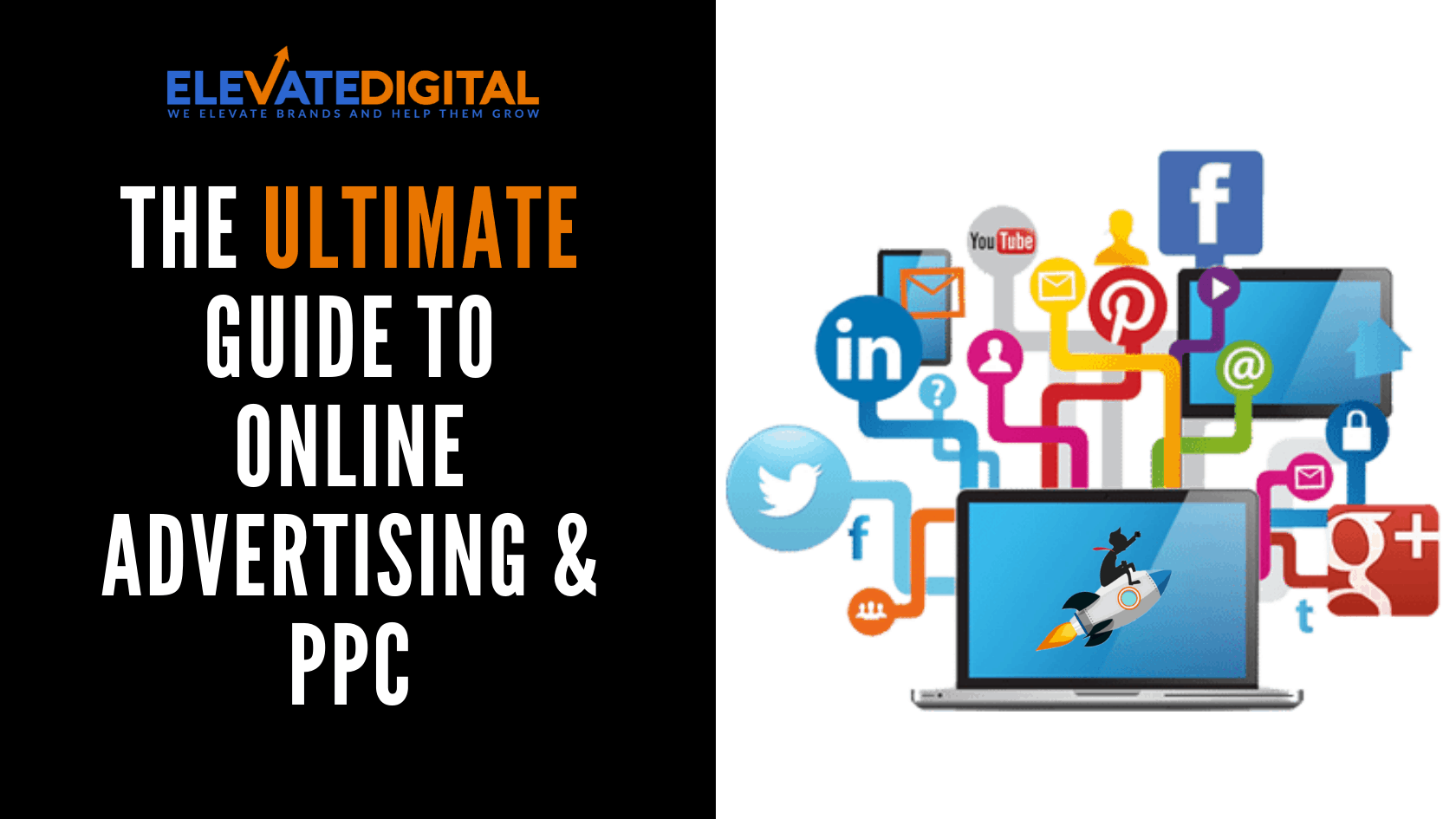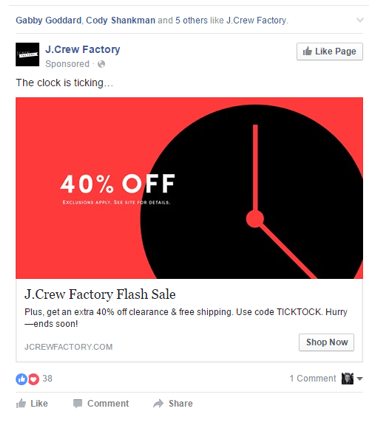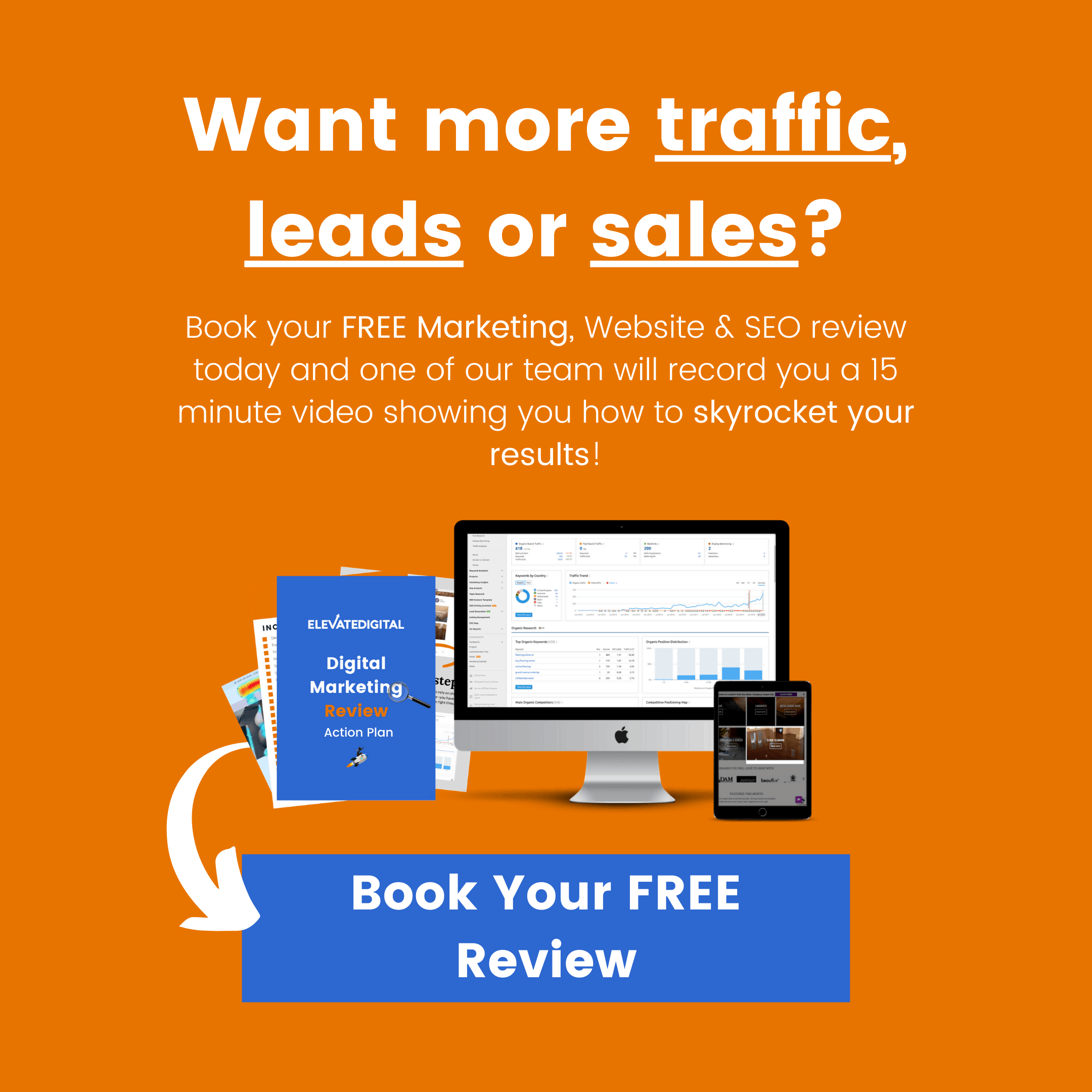Table Of Contents
We’ve designed this guide to be suitable for all levels of knowledge. Feel free to jump ahead to the relevant section if there’s one you want to focus on.
Okay, let’s just be honest here.
There’s no shortage of options and platforms when it comes to advertising your business online!
In fact, it’s an absolute minefield out there!
It’s no suprise that most businesses end up actually losing money from their online advertising efforts.
Quite frankly, there’s almost a bit TOO many tools and platforms to use.
It can almost feel a bit like this at times…
The problem is, nobody talks about the fundamental principles that make it all work!
Fear not my friends, I want to hand you the keys to the kingdom.
My aim with this guide is to break down everything you need to know on a strategic level to start advertising your business profitably!
I won’t be going into specific instructions for each platform, but don’t worry, both Google & Facebook have handy free training platforms that help to walk you through the basics. There are also a number of third party free digital marketing training courses that dive into the nuances of each platform as well as some additional tactics and strategies.
You can find the Google & Facebook training sites here:
This guide is more to give you a complete overview of how you can get the most bang for your buck when it comes to advertising online.
But also to be sure you’re spending your precious marketing budget wisely!
(Oh, and there’s a lot of information here so you might want to bookmark this page so you can come back to it!)
So grab yourself a cuppa and let’s get into it…
First off isn’t the most exciting, but it’s absolutely necessary when it comes to advertising profitably…
Understanding Your Key Business Metrics
Before you start any online advertising campaign, it’s extremely important to figure out two metrics.
Your average Lifetime Customer Value (LCV) and your Cost Per Acquisition (CPA).
These two figure combined, will let you know how much you can profitably afford to spend to acquire a new customer.
*If you already know this, feel free to skip past this section. However, don’t understimate just how important this is. Too mant businesses have gone bankrupt as a result of not knowing these inside out.
Cost Per Aqcuisition is how much, on average, it costs you to acquire a new customer.
Your lifetime customer value on the other hand, is how much an average customer would spend with you over the course of a year.
In an ideal siutation you’d want to subtract your CPA from your LCV to get a true picture of what that customer is worth. But let’s keep it simple for now as you may not have this yet.
You can use this simple formula to give you a better idea:
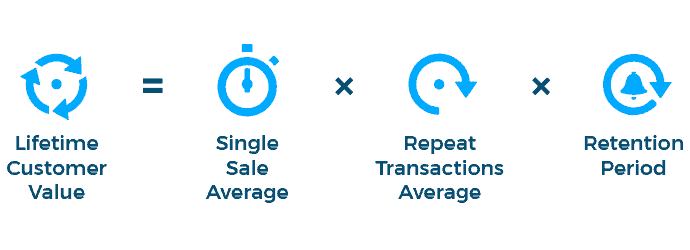
Calculating Your Website’s Current Conversion Rate
Once you have a rough idea on these points, you’ll also want to take a look at your current website’s conversion rate.
Your website conversion rate is the percentage of visitors who land on your website that end up converting into a lead or a sale. If you don’t know this, we have a handy website conversion rate calculator you can use.
This is extremely important to optimise; ideally before starting a PPC campaign.
We often see businesses spending thousands each month on paid advertising when there website converts at less than 1%. This is like pouring water into a bucket that’s 99.9% hole and 0.01% bucket!
Don’t make this mistake!
Using a dedicated squeeze page or landing page specifically for your ads can be a great way of optimising for conversions.
We’ve also compiled a comprehensive 16-step checklist on how to increase your website conversion rate here
'It's worth noting there are several highly effective ways to increase your LCV, but we'll cover that in another article'
How To Work Out Your Online Advertising Figures
Let’s say you run yoga classes and your average student comes to 9 classes a year at £50 per class. That customer would have an LCV of £450 a year.
Therefore, it’s fair to assume you can afford to spend anything below that amount on ads to acquire one customer profitably.
Although in reality, you’ll obviously want to work on getting that much lower!
The next thing you want to work out is your cost per acquisition (CPA).
This is effectively just how much it is actually costing you to acquire a new customer.
Your CPA will include any marketing/sales cost involved in the process of acquiring one new customer.
If that sounds almost impossible to track, it’s probably because you haven’t had systems in place to monitor it before.
This is where online advertising can be a huge help.
Most online advertising platforms will actually track all of your your key metrics automatically.
Some of them like Google, will even allow you to set a target CPA to aim for:
Once you have your CPA worked out, and your ads are up and running you’ll want to start monitoring your return on ad spend (ROAS). This can be measured in a number of ways but in it’s purest form, it’s the amount of return your ads are generating.
For example, it might look like for each £1 you spend on ads, you make £8 back in revenue.
Unfortunately, most ad campaigns we see are actually running the opposite way and therefore LOSING money. That’s why it’s so important to keep track of this metric!
Most advertising platforms such as Facebook will keep track of this for you but you can also use our handy return on ad spend calculator.
We also recently published an article on how to track your marketing ROI by each social media platform or any other traffic source.
In an ideal world, you’ll probably want to be aiming for at least a 8x return on ad spend to account for margins and any other costs. But this can very depending on what you’re selling and how big your margins/expenses are.
For more tips on increase your marketing ROI and ROAS, check out our YouTube video below:
The Stages Of The Sales Funnel (Or Buyer Journey)
The next most important thing to factor in and be aware of when running a marketing campaign is where your customer is in the sales funnel.
Most importantly, which stages of the funnel you’re looking to target.
There are multiple different versions of the sales funnel/customer journey.
But it’s typically broken into three sections:
- Top
- Middle
- Bottom
It’s said that only 3% of potential customers in any marketing will ever be ready/looking to buy RIGHT NOW (bottom of the funnel).
The opportunity lies in the fact that most brands don’t even bother reaching that remaining 97% in the upper areas of the funnel.
As a result, they end up in a sea of competition and living in a cycle of feast and famine.
Top Of The Funnel
As an example here, let’s say somebody has back pain, but they don’t know what the cause is and haven’t seen a doctor yet.
This is an example of a customer who would be at the top of the funnel.
If you’re targeting these people, you’ll want to focus on educating them.
Maybe offering them a free guide to the most common causes of back pain, or some free exercises to reduce the pain.
Middle Of The Funnel
Middle of the funnel might be when they’ve spoken to their GP or chiropractor and been told they have a slipped disk and there are several options.
This is where they become solution aware and you’d now want be educating them on how your product works and can help.
Bottom Of The Funnel
Bottom of the funnel is where they’ve now done their research, so are now also product aware and ready to buy!
For this reason, the bottom of the funnel is where most companies will spend their ad budget.
The only downside to that is it’s often the most competitive space!
There are definitely still quick-wins to be had which we’ll explore this shortly, but before we do, there’s one more important ingredient missing…
Understanding Your Audience
So now that you’re aware of the different stages of the buyer journey, it’s time to ask… who is that buyer??
What are their fears, doubts and concerns and what are they REALLY looking to achieve?
Knowing and understanding your customer avatar is a critical element of any successful marketing campaign.
The most effective marketing always aims to go DEEP, not WIDE.
In other words, each campaign should REALLY speak to one core audience in a powerful way.
When you try to spread the net wider, the message will lose it’s punch and your results will take a dive.
Now don’t worry! I’m not saying you can only have one customer avatar.
In fact, most businesses do have several customer avatars and that’s absolutely fine.
But it’s important that you separate these into different campaigns. Otherwise your messaging will feel generic and consequently miss the mark!
Check out this example below from a company targeting “workouts for busy moms”
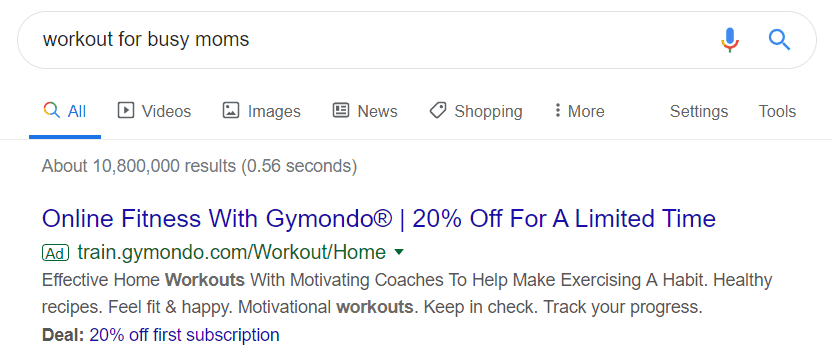
The problem with this ad is there is absolutely no reference to being a mum or being busy!
As a result, the person reading this will likely feel like they’re not understood.
If I was a busy mum and there was another ad below this which said something like:
“Calling All Mums | Get Healthy & Fit In Just 20 Minutes A Day!”
I know which one I’d be clicking on!
Getting In The Head Of Your Customer Avatar
Now before you jump into a paid advertising campaign, take some time to really think about how this could look for your audience.
Most importantly, WHO is your perfect customer?
Answering this question won’t only help you get more clarity on your messaging. But it will give you a better idea of where your customer is hanging out online.
For example, what social media platforms would they likely be using and what industry publications/blogs could they be reading?
Another important thing to ask yourself here is, what is the transformation you are offering your customers.
Consider that whenever we make a purchase; we do so for a desired end result or a transformation of some sort.
You may have heard the expression “People don’t really want the drill bit, they want the hole in the wall”.
Take some time to think about how this relates to your product or service as this will play a big part in your marketing copy and ensuring your advertising campaign resonates with your audience. We also have a handy worksheet that can help you with this called the Before & After Transformation Grid.
And if you haven’t already done so, be sure to check out our article on how to create a customer avatar which goes much deeper into this.
You’ll also find some free customer avatar worksheets below to help you really get clarity around this!
Right… so, now that you’re clear on your costs, the funnel stages, and your customer, we’re going to take a look at how you can start to start putting all this to work.
We’ll also be exploring some of the nuances of each platform including, how and when you might want to use some instead of others.
We also have a video on this below which covers which platforms are most suitable for each stage of the funnel. It also covers how to find the best platforms to advertise on for your specific business and circumstances:
Finding The Quick Wins With Google Ads
By now you’re probably itching to just get stuck in and get to the good stuff right?
Don’t worry, I’ve got you covered! We’re going to start by targeting those quick-wins at the bottom of the funnel. We’ll also explore some of the best platforms for reaching them!
Now bear in mind, you could be selling anything here…
A new software product, a yoga class, or maybe even a healthcare supplement…
But remember, at this stage of the funnel, these are going to be the people who are ready to make a purchase…
So let’s dive straight into one of the best online advertising platforms for doing this…
Google Ads
Running a Google Ads Campaign can be incredibly powerful for targeting the bottom of the funnel.
This is because you can show ads based on what people are actually searching for by targeting specific keywords.
Now I want you to think of this in relation to YOUR product or service…
But let’s just say for example, I was looking for a productivity app.
I haven’t really done much research yet, but I know something could probably help me be more productive (top of the funnel).
I might type in something like “productivity software reviews” or “productivity software”
Typically this will be a longer sales cycle as I’m not likely going to buy anything right now.
That’s not what we want if we’re looking for people who are ready to buy right now.
We need to find the keywords that show that this buyer has an intent to make a purchase.
For example, they might be looking up something like “best deal on productivity software” or even searching a specific brand name.
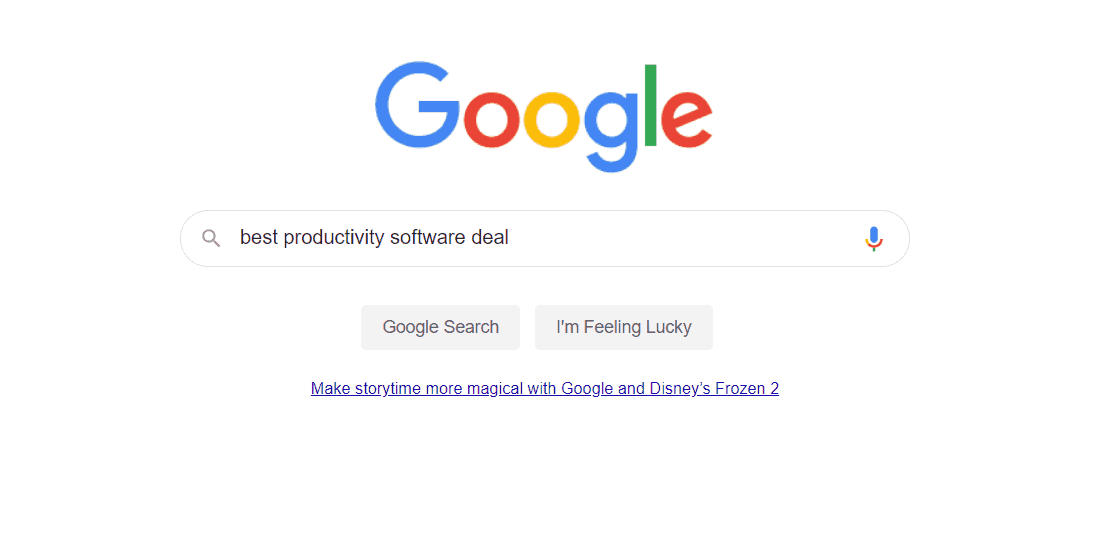
If you can find those keywords within your industry that really show that someone is ready to buy, you’ll usually get much higher conversion rates from the first click.
Now typically you’ll pay more for a click to these keywords because a lot of people are bidding against them.
So do your research beforehand on a tool like Ubersuggest.
This will allow you to see the average CPC (cost-per-click) of a keyword and the overall competitiveness.
It’s also important to make sure the website or landing page that you’re sending customers to is actually going to convert visitors to sales!
Need Help Improving Your Conversions?
Book your FREE digital review today and we’ll show you how you can sure your site converts and turn more of your visitors into sales
YouTube Pre-Roll Ads
YouTube Pre-Roll Ads can be another extremely powerful online advertising platform when it comes to targeting that bottom of the funnel consumer.
One of the great things you’ve got on YouTube is that you can target specific video searches or even just their recent Google search history.
How To Use YouTube Pre-Roll Ads
So let’s say, you’re an online personal trainer or coach looking to target busy entrepreneurs who want to get fit, but don’t have time to go the gym.
There’s a good chance they might be looking up home workouts on YouTube.
This could be a great place to run a video ad for your new online training course or app and speak to that exact audience.
Here’s an example of a nutritional supplement company targeting people who are new to working out.
It’s a really really great example of targeting the right audience at the right time, thus increasing your chances to convert them to a sale!
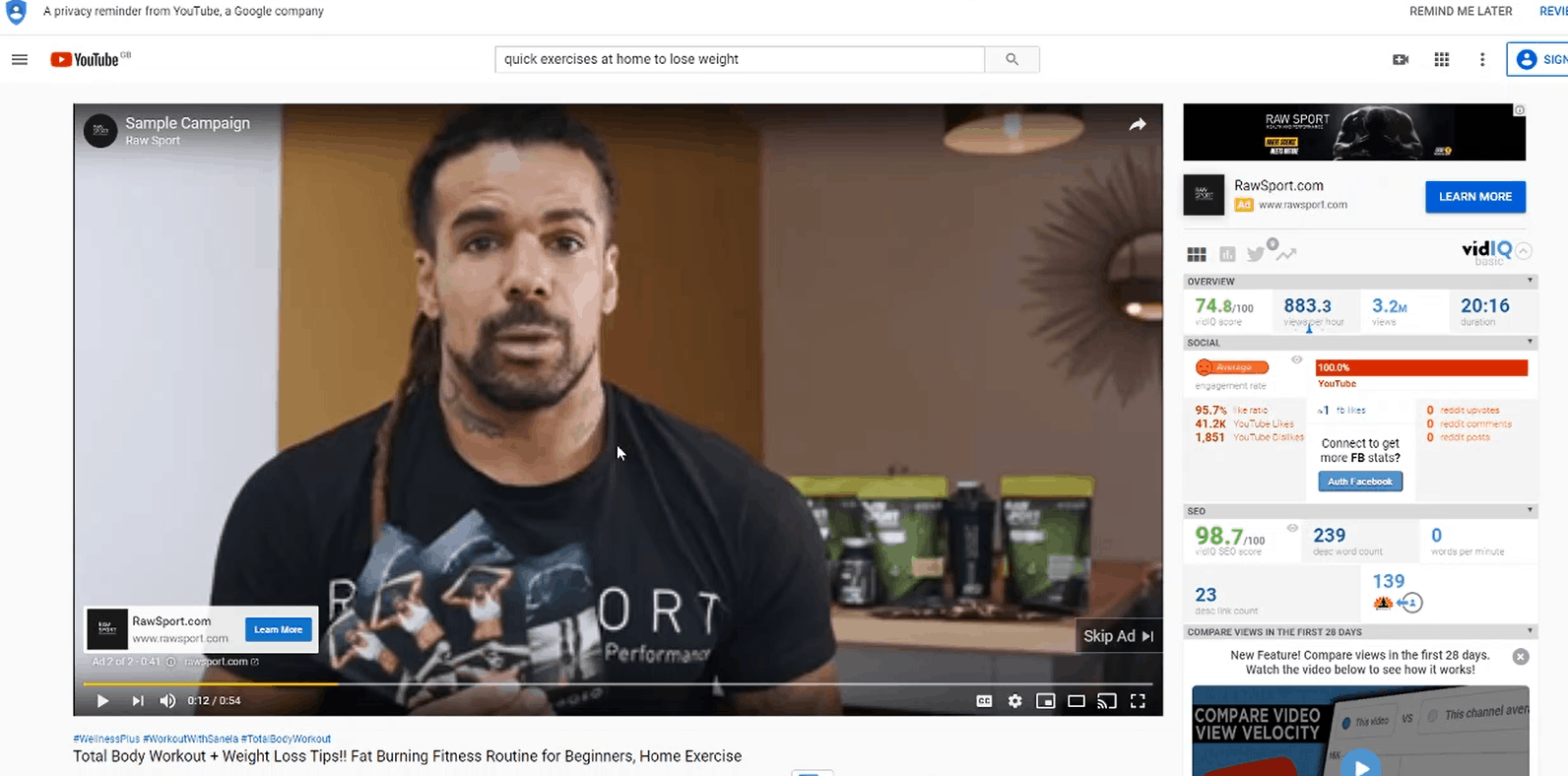
Now this isn’t to say that you can’t target middle or top of the funnel consumers with Google Ads, because you absolutely can!
It just takes a different approach and that’s what we’re going to come onto next.
The HUGE Missed Opportunity With Online Advertising
This upper area of the funnel is where you can gain a HUGE advantage, IF you’re willing to be patient and play a longer game…
Again, the people at the top or middle of the funnel, often don’t realise just how bad their problem is yet.
You know those moments when you accidentally cut yourself…you realise you’ve just cut yourself, it feels uncomfortable, but it only hurts when you look down and see a gaping hole or tonnes of blood…
Remember, your job at this stage isn’t to sell the bandage, as they likely don’t even know it’s bleeding yet!
Your job right now is to simply relate to them on what they’re CURRENTLY going through, and educate them around the discomfort they’re experiencing.
If they sense you’re trying to sell them something at this stage, they’re probably going to run!
The Lead Magnet
Instead of going straight in for the sale, this is where you would use something like a lead magnet. If you don’t know what a lead magnet is, be sure to check out our article on lead magnets.
So let’s look at an example here…
Let’s just say, I’m unhappy with my current home and I’m considering buying a new one.
However, I don’t yet want to be pitched by real estate agents so I’d rather just do my research.
This is where offering a lead magnet like “5 things you NEED to know before buying a new home” can really help to give value to your audience and bring them into your marketing funnel.
Here’s a great example from Premier Estate Agents with a lead magnet aimed specifically at people thinking about renting out their property:
(Again, think here about how this could look for YOUR business)
THIS is where that golden 97% figure comes in!
Because like I said earlier, it’s estimated that only 3% of your entire customer base will be ready to buy at any one time.
The problem is, most of your competition are also fixated on finding that 3%.
Which means you’ll likely find yourself deep in shark infested waters…
Creating Your Own Blue Ocean
Consider that when you can get to that remaining 97% EARLY, you have an incredible opportunity.
This is your chance to build trust, demonstrate your expertise and become seen as a trusted authority in your industry.
In other words, by offering that lead magnet upfront, you’re moving out of bloodied waters and creating your own clear blue ocean.
Nurturing Your Leads
At this stage, it’s critical to build that relationship with your leads through something called a lead nuture campaign.
This can be done through an automated email sequence using an autoresponder/CRM like Mailchimp or ActiveCampaign.
Looking at the Real Estate example above, we would want to send a pre-made sequence of emails to our new leads.
This might be a weekly email with tips of renting out your home or how to create great Real Estate listings.
Remember, the idea here is to build trust and credibility on autopilot
So when the time comes to find a supplier, they won’t even feel the NEED to shop around.
As they already have someone they know like and trust…
Powerful stuff right!?
Even better, the money you DO spend on ads to acquire that lead will be cheaper, because the competition is lower!
Filling The Entire Funnel
For new businesses who are limited on cashflow, obviously it’s important that you have a mix of both the quick wins (bottom of funnel), whilst still building out that long-term pipeline (top of funnel).
But over time, as you scale up, you’re going to have a HUGE advantage above anybody else in your space.
This is because your leads are now sold into YOU and your business, not just what you do.
Now, let’s move onto the social media platforms – This is where things can really get interesting!
Reaching The One’s That Got Away…
Facebook & Instagram Ads
Where platforms like Facebook and Instagram can become extremely powerful, is through the use of what’s called re-targeting.
It’s worth noting here, this can be done on most online advertising platforms, but for context, we’ll stick with social here.
So let’s say, I’ve visited your website, or clicked on your ad, but I didn’t become a lead or buy from you.
I’ve effectively expressed an interest in what you have to offer, but for whatever reason, I wasn’t ready to buy or sign up.
With re-targeting you have the ability to re-target those people specifically, through the use of a pixel.
Cookies Aren’t Just For Eating
A pixel is a small piece of code you put on your website, which places cookies (not the yummy crumbly kind I’m afraid) on your visitors PC and allows you to run ads to them across a number of other platforms.
This can help with a number of things:
- Building credibility
- Making additional offers to close the sale
- Keeping you or your company front of mind
- And ultimately, leading to more leads and sales
Here’s a couple of examples.
An e-commerce store could re-target visitors with a FREE shipping offer or exclusive discount code.
A gym could offer a FREE personal training session if customers sign up for their trial membership today (gives people a reason to act now!).
A software company could re-target visitors who didn’t purchase, with testimonial videos of their product for social proof.
Sometimes even throwing a good old bit of scarcity into the mix with a timed offer can work wonders:
The possibilities are endless here and you can have some real fun and get creative!
Hell…maybe even just let them know how heartbroken you are they left without buying! I guarantee you’ll catch their attention 😉
Re-targeting can also be done across Google’s display network which includes millions of industry specific websites, apps, blogs and other companies that allow ad placement.
Not All Traffic Is Made Equal
Whilst it certainly isn’t impossible to make quick sales through Social Media, it’s much more difficult to do so.
Which is why Facebook & Instagram Ads are better for top of the funnel targeting.
Mainly just because of the context – People generally don’t go on Facebook with the intention of buying something.
You’re effectively interrupting their time catching up with friends and family, stalking ex’s, or whatever it is they’re up to…
Whereas with something like keyword targeting on Google, it’s easy to hit that bottom of the funnel consumer.
This is because, you can specifically target people who are searching for that specific thing with the intent to make a purchase or at least an enquiry.
So unless you’re an extremely talented copywriter or have a talented team of creatives, you’re best off avoiding this approach to sell directly.
Especially if you’re new to online advertising.
Underutilised Online Advertising Platforms To Be Aware Of
One massively underutilised online advertising platform right now, especially in the B2B world right now is LinkedIn!
In fact, LinkedIn has the best organic reach potential of any other platform so it can actually be a great place to reach your audience, even without paid ads (check out our LinkedIn Training video here).
But the best thing about running ads on the LinkedIn platform, is that you’re able to target people with specific job titles.
Whether you’re selling to Freelancers, CEOs of software companies, HR managers, or even just specific industries, the possibilities are literally endless.
The cost you pay per click is going to be substantially higher on LinkedIn but the potential returns you can get from them can be phenomenal because you can really speak to a particular audience.
Just make sure again, that you understand your lifetime customer value when deciding on whether to advertise on LinkedIn. Generally, B2B sales can be worth much more than B2C, so you’ll have to weigh this up accordingly.
Spotify Ads
Now we’re getting into super ninja territory here.
Spotify’s Ad platform is still in its infancy but the potential here is huge for certain industries.
In fact, their online advertising platform actually gives you the opportunity to target users based on a playlist they’re listening to.
Spotify even break these down into moods or certain activities.
For example you have breakup playlists, cooking playlists, holiday preparation playlists, exercise playlists and the list goes on…
Are the cogs whirring yet?? 😉
There is huge potential here to run highly targeted ad campaigns entirely based on the context and mood of the listener.
As a society we’ve become so busy and fixated on convenience, which is why all of the major brands are shifting towards voice technologies like Amazon’s Alexa.
It’s the same reasons podcast listeners are rising year on year.
We simply want to be able to consume content whilst we’re on the move, so audio ads will likely become a huge area going forward.
Right now Spotify Ads can be extremely expensive with a high minimum spend but it’s definitely something to be aware of!
This guide will be regularly updated, so be sure to keep it bookmarked! But hopefully by now, you’ve got a much better understanding and context behind the online advertising landscape!
If you’d like help in creating a customised strategy for your business, make sure you claim your free marketing review today.
As part of your review, we’ll record you a value-packed video, dissecting your website, social media channels and entire online presence. We’ll then give you some helpful suggestions and practical tips you can implement to really start taking your marketing and sales to the next level!
- Highly-Effective DTC Marketing Strategies & Examples - February 28, 2024
- How To Set Paid Media Marketing Budget - October 16, 2023
- The Ultimate Guide To A/B Testing - September 23, 2023
